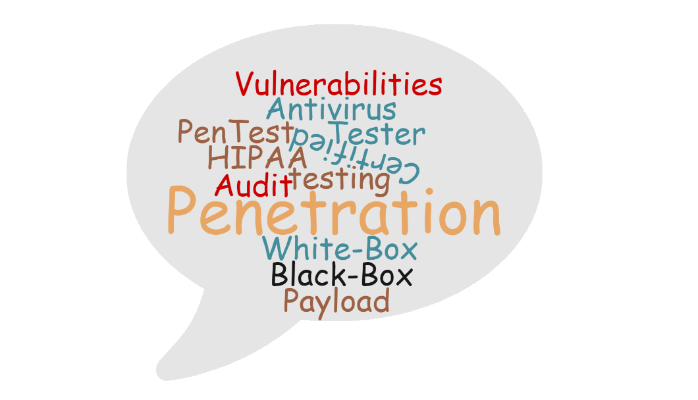
There are a lot of different ways that penetration testing is described, conducted and marketed. Often confused with conducting a “vulnerability scan”, “compliance audit” or “security assessment”, penetration testing stands apart from these efforts in a few critical ways:
A penetration test doesn’t stop at simply uncovering vulnerabilities: it goes the next step to actively exploit those vulnerabilities in order to prove (or disprove) real-world attack vectors against an organization’s IT assets, data, humans, and/or physical security.
While a penetration test may involve use of automated tools and process frameworks, the focus is ultimately on the individual or team of testers, the experience they bring to the test, and the skills and wherewithal they leverage in the context of an active attack on your organization. This can’t be over-emphasized. Even highly automated, well-resourced, and advanced networks employing sophisticated counter-measure technologies are often vulnerable to the unique nature of the human mind, which can think laterally and outside of the box, can both analyze and synthesize, and is armed with motive and determination.
A penetration test is designed to answer the question: “What is the real-world effectiveness of my existing security controls against an active, human, skilled attacker?” We can contrast this with security or compliance audits that check for the existence of required controls and their correct configurations, by establishing a simple scenario: Even a 100% compliant organization may still be vulnerable in the real world against a skilled human threat agent.
A penetration test allows for multiple attack vectors to be explored against the same target. Often it is the combination of information or vulnerabilities across different systems that will lead to a successful compromise.
Need of a Penetration testing:
Penetration testing is a type of security testing used to test the insecure areas of the system or application. The goal of this testing is to find all security vulnerabilities that are present in the system being tested. Vulnerability is the risk that an attacker can disrupt or gain authorized access to the system or any data contained within it Vulnerabilities are usually introduced by accident during software development and implementation phase. Common vulnerabilities include design errors, configuration errors, software bugs etc.
What is the Value of a Penetration Test?
Here are a few of the reasons organizations invest in penetration testing:
- Testing the ability of network defenders to successfully detect and respond to the attacks
- Assessing the magnitude of potential business and operational impacts of successful attacks
- Determining the feasibility of a particular set of attack vectors Identifying higher-risk vulnerabilities that result from a combination of lower-risk vulnerabilities exploited in a particular sequence
- Identifying vulnerabilities that may be difficult or impossible to detect with automated network or application vulnerability scanning software
- Meeting compliance (for example: the Payment Card Industry Data Security Standard (PCI DSS) requires both annual and ongoing penetration testing (after any system changes)
- Post security incident, an organization needs to determine the vectors that were used to gain access to a compromised system (or entire network). Combined with forensic analysis, a penetration test is often used to re-create the attack chain, or else to validate that new security controls put in place will thwart a similar attack in the future.
- Providing evidence to support increased investments in security personnel and technology to C-level management, investors, and customers
Who needs PenTesting?
Most corporations especially ones in the financial sectors like Banks, Investment Banking , Stock Trading Exchanges want their data to be secured , and penetration testing is essential to ensure security.
Another situation where PenTest is really important is in case if the software system is already hacked and organization wants to determine whether any threats are still present in the system to avoid future hacks.
It is a universally accepted fact that Proactive Penetration Testing is the best safeguard against hackers, so everyone needs a PenTest!!!







